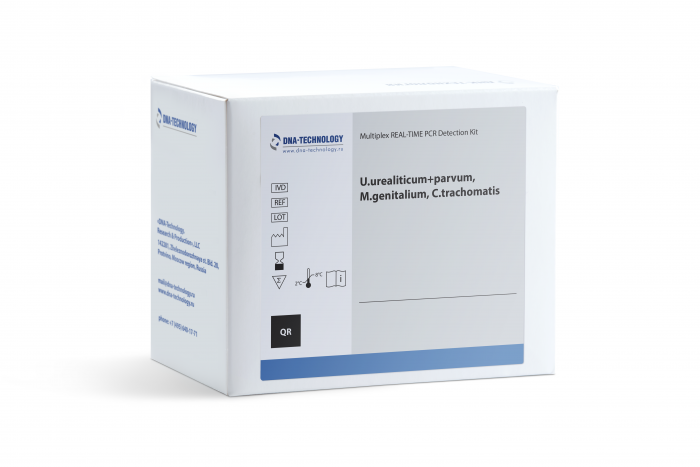UMC multiplex (U.urealyticum+parvum/M.genitalium/C.trachomatis)
The main causative agents of urogenital infections (sexually transmitted infections) are: Treponema pallidum, Neisseria gonorrhoeae, Chlamydia trachomatis, Trichomonas vaginalis and Mycoplasma genitallium. The role of these infectious agents in the development of urogenital tract diseases has been proven and now their diagnosis via qualitative methods is beyond question.
Mycoplasma hominis, Ureaplasma urealyticum and Ureaplasma parvum can be present in the urogenital tract together with non-opportunistic pathogens. These microorganisms are opportunistic organisms capable of causing a disease when exposed to a variety of endogenous and exogenous factors.
PCR method enables to:
• Identify the etiology of the infection;
• Maintain control over the infection;
• Assess the relative (compared with normal flora) amount of microorganisms, which is important for opportunistic pathogens that cause pathology only under certain conditions (increased concentration due to lower amount of normal flora);
• Evaluate treatment effectiveness
U.urealyticum+parvum/M.genitalium/C.trachomatis Multiplex REAL-TIME PCR Detection Kit (UMC Multiplex) DNA in human biological samples by method of multiplex Real-Time PCR. Current modification of the method allows simultaneous detection and differentiation of Ureaplasma urealyticum, Ureaplasma parvum, Mycoplasma genitalium and Chlamydia trachomatis DNA in the same tube.
Sample: urina; epithelial cell scrapes from urethra, cervical canal, posterior vaginal vault; oropharyngeal and conjunctiva swab, etc.
DNA extraction: PREP-NA, PREP-GS extraction kits
Certification: RU/IVD
Software, modules, ini-files
Storage requirements | +2...+8° С |
|---|---|
Shelf life | 12 months |
|
Detection instruments |
Number of tests |
Tubes(ml)/ Strips |
Product number |
|
DT instruments with 4 detection channels only |
96 |
0.2 |
R1-P113-23/9EU |
|
0.2х8 |
R1-P113-S3/9EU |

